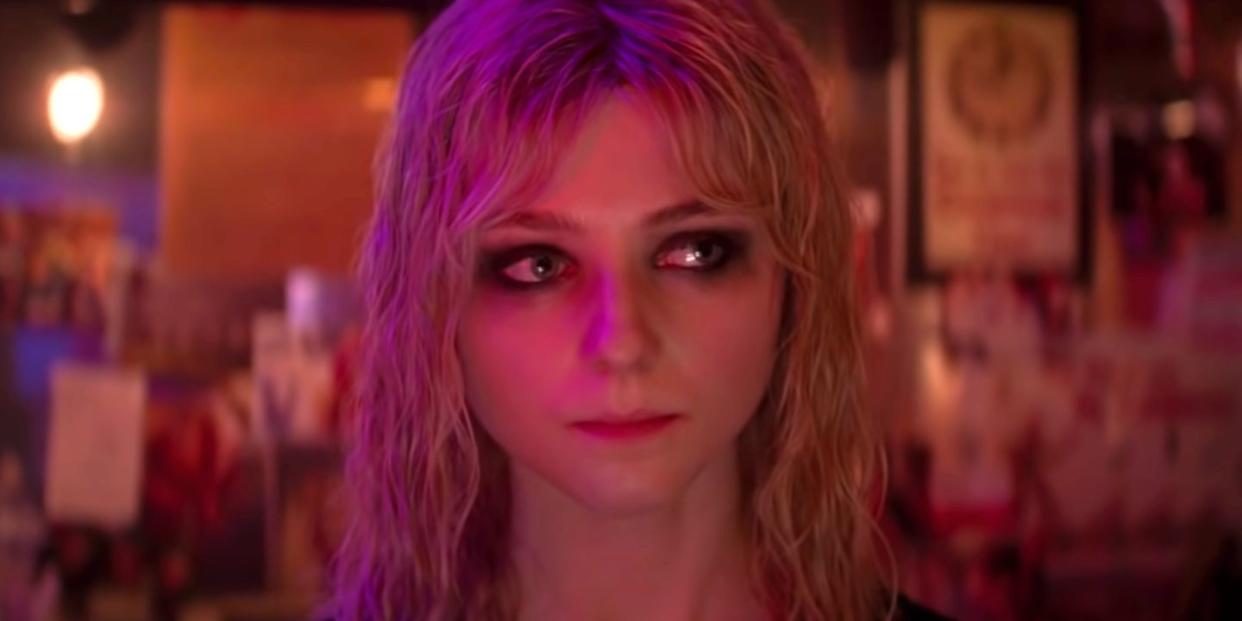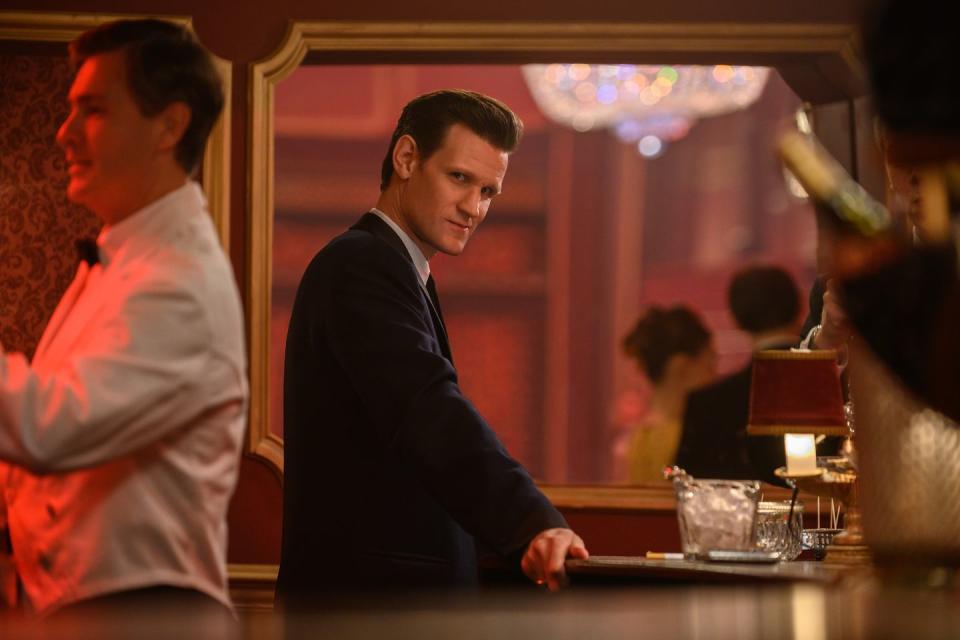Last Night in Soho makes a big mistake with its major plot twist

- Oops!Something went wrong.Please try again later.
Last Night in Soho spoilers follow.
Last Night in Soho has been on the radar for some time, titillating film fans with atmospheric snaps of Matt Smith and Anya Taylor-Joy, all neon lights and smoky bars reflected in the wide-eyed gaze of Thomasin McKenzie, a budding fashion designer who dreams of life in the big city.
The movie itself tries to blend thrills and themes, but there's a muddiness to it. Not only because of the way it hops between waking and dreams, past and present, but because the message (if you can call it that) remains evasive – even, it seems, from the film itself.
This isn't a 'leave it to interpretation' kind of ending, a wry Mona Lisa smile that can be construed however the audience chooses. Instead, it's an attempt to say everything at once and the result is a cacophony.

Much of the film is preoccupied with Eloise's slow descent into madness. She is haunted, literally, by ghosts: first it's the ghost of her mother who, like Eloise, went to London as a girl but was destroyed by it and died by suicide. Then, ghosts from Soho in the '60s – in particular, a sultry singer named Sandie (Taylor-Joy) whose murder Eloise is convinced she's seen and is trying desperately to solve.
Sandie herself doesn't get much screentime beyond the flashbacks (or visions?) we see through Eloise's dreams. We learn that Sandie lived in the same room Eloise now rents from a gruff but caring old woman (the late and very great Diana Rigg), and that she wanted to be a famous singer like Dusty Springfield.
Instead, she's swallowed up by the city, taken advantage of by her manager Jack and left with no ambition or dreams of her own. Though the craft of it is skilful — playing with reflections in a way that doesn't become boring — there is no heart to the character until the end.

As Eloise becomes more entrenched in the past, she sees more ghosts. Most haunting is the ghost of Jack (Smith) who she believes is responsible for Eloise's murder, and the many men to whom Jack pimped Sandie out.
We only see what has happened through Eloise's gaze, which complicates our understanding of the past. We see Sandie as a victim because Eloise does so until the "truth" is revealed.
Sandie was not murdered. She is – surprise! – the very same old woman from whom Eloise is renting the room. She murdered Jack and the countless other men with whom she slept. How does Eloise discover this?

The friendly male ghosts, of course. The same ones who had been chasing her and haunting her now whine "help us" and – in a moment that made your journalist swear out loud – pick up the phone to help Eloise call the police on Sandie.
It's a grossly failed attempt at subversion, flipping the gender roles of victim and perpetrator in an attempt to say something "clever" about the way we perceive people because of their gender.
But the issue with this attempt, besides its poor execution, is that the film is – up to this point – an indictment of the power imbalance of sexism. And that is a reality that few films can escape, especially not a film based in real-life London.

Last Night in Soho takes place in two worlds (past and present) both of which are rife with gender-based violence. That the film comes out months after the murders of Sarah Everard and Sabina Nessa only makes the victim-framing of the many, many men all the more sickening.
We don't know the reality of the situation: were the men turning up for a sexual encounter with Sandie and getting killed because she was being pimped out and in a dangerous situation? Or was Sandie luring unsuspecting men to their deaths, rather than killing in self-defence? Last Night in Soho doesn't want to tell us, but because it refuses to come down on one side of the argument it necessarily defaults to siding with the powerful.
Sandie isn't a complicated woman. She isn't someone driven by revenge or trauma or even an insatiable lust for murder. Any of these would be better than the nothingness we were given — she is an empty shell meant to represent the countless women like Eloise (who isn't given nuance, either) who turn up in the big city and get swallowed up by a world that discards women.

That Eloise is sort-of responsible for the death of the "one good guy" (former cop Terence Stamp, who she believes to be Jack) hammers this point home again. Women, try as they might, can't seem to get it right! And it's better they stick to dressmaking or cooking or whatever than try to be agents in their own lives.
Eloise's coda holds little emotional resonance because it tries to reframe the movie's failed subversion as a win for feminism. Eloise, a year later, wows her university fashion show with some '60s inspired gowns, has a boyfriend (the very earnest Michael Ajao) and has made her grandmother proud.

She's joined by the ghost of her mother, but her mother's proud of her too (so we suppose she's now resting in peace?). She sees Sandie, too, and we're left to wonder why.
Everyone except, arguably, Eloise goes on with their lives as if Sandie never mattered. This is, perhaps, the only clever move Last Night in Soho unwittingly makes. Because that is the truth: in most cases, the most vulnerable women never matter to the big, patriarchal picture.
Last Night in Soho is now playing in cinemas
You Might Also Like

